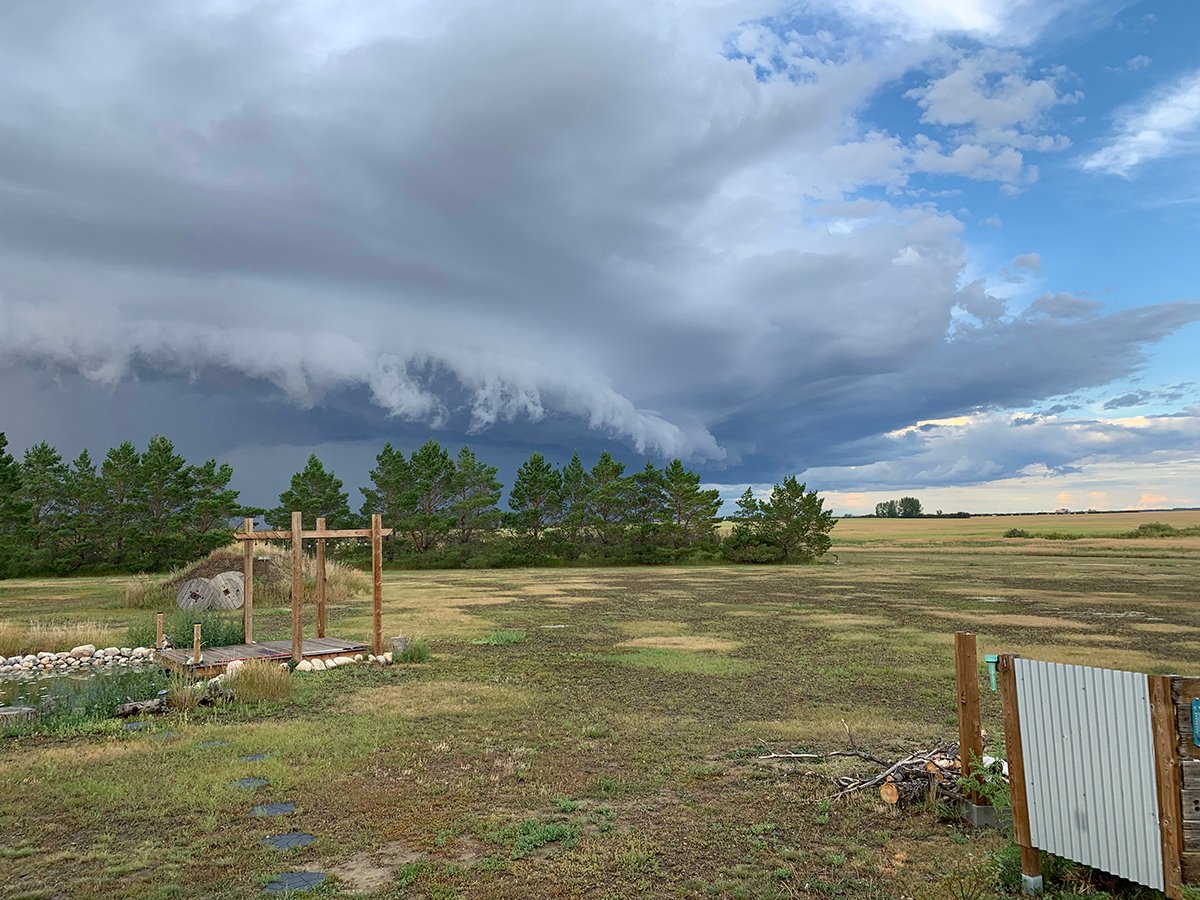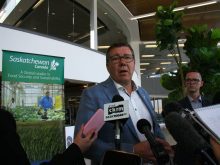MEDICINE HAT, Alta. – Cars and trucks whiz along Highway 41, a ribbon of blacktop that cuts across the Spartan landscape of southeastern Alberta.
Cypress Medicine Hat MLA Len Mitzel calls the north-south highway in eastern Alberta a corridor, one that could connect manufacturers in the United States with the tar sands projects at Fort McMurray, Alta., sparking economic development in rural areas along the highway.
Truck traffic in Alberta has increased three to four percent annually in recent years, so Mitzel thinks it’s time the Wild Horse border crossing, where Highway 41 enters the United States, became a commercial 24-hour port.
Read Also

Storm dynamics and extreme rainfall
Besides moisture, instability and orographic lift, the next biggest factor that contributes to heavy or extreme rainfall is storm dynamics.
“It assures the Alberta economy that we’ve got two border crossings,” he said.
Coutts is now Alberta’s only commercial port.
Alberta does $6.9 billion worth of annual truck trade into the United States in cattle and oilfield supplies, with $6.7 billion coming back to Canada in produce, oilfields supplies and electronics.
That means a lot of truck traffic and a bottleneck at the single Alberta commercial port, Mitzel said. A second route would give truckers a choice.
The Medicine Hat region is a mature oil and gas area, but its neighbours are on the cusp of their own boom with increased oil and gas exploration to the east in Saskatchewan and to the south in Montana.
Mitzel sees opportunities to supply them with Alberta’s oilfield services and expertise. That is already happening as Alberta oil companies conduct drilling operations there.
He said there are opportunities for communities on the highway, from servicing truck and tourist traffic to building skid shacks for oilfields.
“Rural development will eventually infill.”
He said a bill before the Montana senate for highway twinning is positive for Canadian neighbours in the long term.
The second border crossing idea is an opportunity for regions to collaborate in lobbying state, provincial and federal governments to provide additional choices to truckers.
Mark Bisom, international trade officer with the Montana department of transportation, said tourism trade to the south is on the rise.
He has seen more Canadians flocking south since the loonie strengthened to near parity, which is of particular interest to border communities in Montana such as Turner, Morgan and Wild Horse, which are pushing for better border access.
Bisom sees other opportunities for economic activity related to the tar sands development in Alberta.
“There is interest all along the line to having increased access to port facilities, meaning expanded hours. We do believe that’s going to help regional economic development,” he said.
“Anytime you can increase port access, you certainly hope to see more traffic going both ways …. It helps that region with their local economy.”
The Montana government has launched a study to look at the transportation situation, the estimated needs and how the tar sands projects will affect the corridor.
“That will be a critical study that will also help the federal government on their decisions on a 24 hour port,” he said.
Garth Vallely, co-chair of the Canadian-American Wild Horse border committee, sees the port as a public safety issue.
A recent study done by a Montana economist found the Coutts-Sweetgrass port dominated truck traffic with 120,000 crossings in 2006, largely funneling north to the congested Highway 2 corridor between Calgary and Edmonton
Portals at Raymond and Roosevelt had 19,500 truck crossings in 2006, and Wild Horse came in next at 2,800 trucks.
“That’s a lot of truck traffic at one Alberta port,” Vallely said about Coutts. “Alberta is sitting on a one legged stool at Coutts-Sweetgrass. We need another leg.”
The Montana study showed commercial truck traffic at Wild Horse would quadruple if it became a commercial crossing.
“The spinoffs from that are enormous,” said Vallely, citing opportunities in truck servicing, tourism and the establishment of a heavy oil refinery in the zone.
Improving economic opportunities for southeastern Alberta is a full-time preoccupation for Harold Wilson of the Economic Development Alliance of Southeast Alberta.
The organization’s executive director said his group is funded by five rural and urban municipalities and focused on bringing new investment to the four million acre area.
In addition to working to keep businesses in the region, Wilson’s job is to attract new ones.
“The benefit of working for the regions allows us to have more flexibility and more options,” he said.
Wilson said an example of the region working together successfully is Polycore, a company from Houston, Texas, that chose the community of Bow Island, Alta., to build a plant that makes liners for pipes used in the oil industry.
He encourages rural areas to put the infrastructure in place to accommodate business parks or plants when they come calling.
Wilson said regions need to “find shared interests and move yardsticks” to ensure economic development, noting issues like underdeveloped roadways don’t end at one region’s border.
Rural districts need to work together to eliminate a patchwork of roads and services and streamline development.
Mitzel said much can be gained by working together to attract business.
“It’s so important to recognize that whether we are in Canada or neighbours, we’re also partners.”














